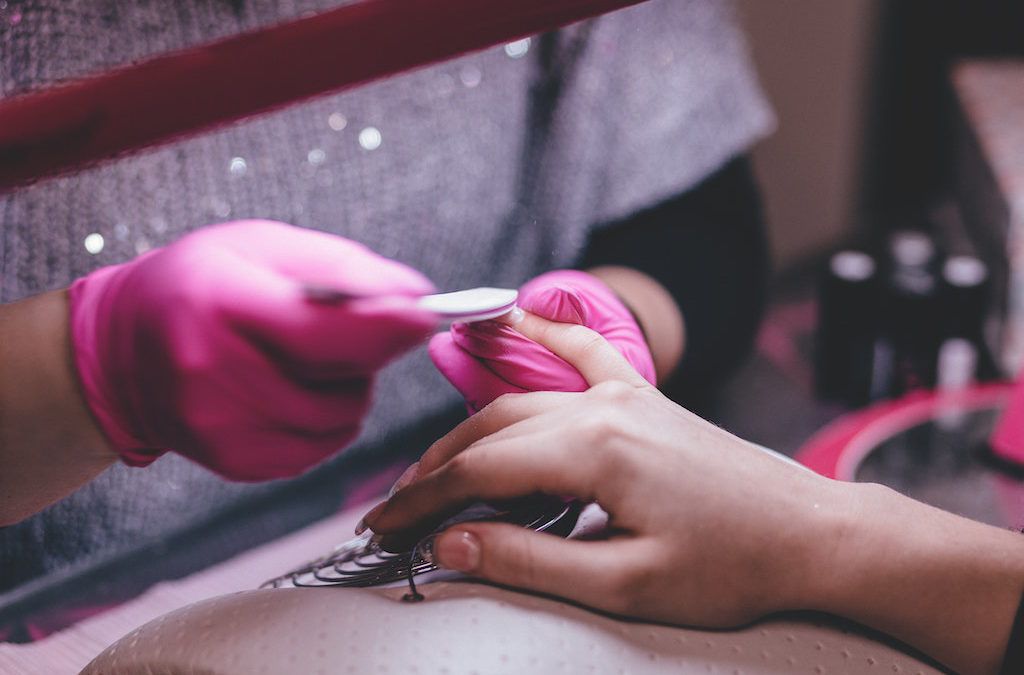Beauty treatments generate large amounts of waste, from waxing strips to acupuncture needles and everything in between. The difficulty for new salon owners is often devising a beauty waste management plan that ensures clinical waste is separated from domestic waste, sharps are in the right container and everything that can be recycled is going into the correct bag.
We help beauty salons across the South East to responsibly dispose of their waste every year, through regular collections that fit around the salon times and visits from our site advisors on request. For those who are new to beauty waste or simply need a knowledge refresh, we have written a short guide to help you understand the relevant types of waste in the beauty industry and which bins to use.
Clinical Waste
Bagged, soft clinical wastes are split into two distinct categories: Infectious/potentially infectious (orange bag) and non- infectious, known as offensive waste (Yellow /Black stripe). We strongly advise that these are made available in every beauty treatment room in your salon.
Once you know your client has no infection or not, you can determine which bag is to be used, either Orange or Yellow /Black stripe. Items that must be placed in bags include cotton wool buds, wax strips, pads etc. Absolutely nothing sharp, that could puncture the bag, can be placed here.
Sharps Waste
There are three different types of sharps waste, all of which are defined by how they have been used and differentiated by a lid colouring system:
The orange lid: This bin is for sharps that have NO medicinal or chemical contamination, which would include blades, acupuncture needles, and tattoo needles.
The yellow lid: This bin is for sharps that have been contaminated with medical or chemical residues, no matter how small an amount, such as local anesthetic needles, micropigmentation pens, etc.
The purple lid: This bin is for hazardous sharps that have been contaminated with cytotoxic or cytostatic medicinal products. It would be used after beauty treatments such as botox, hormones, and steroids.
General Domestic Waste
In the waste world, general domestic waste is a smarter way of referring to items that are not suitable for recycling. Domestic waste in a beauty salon traditionally consists of floor sweepings from hair, nails and general dirt, food waste from lunch breaks and cleaning cloths. They would all need to be placed in a black bag.
Recycling
It’s important to note that you cannot place items that contain or have contained medicines in general domestic waste.
There are many items within beauty salons that can be recycled, for which you would use your current contractor’s recycling bags. Once washed out, all your shampoo and conditioner bottles, soap packaging and hand disinfectant bottles can be recycled. It’s also worth remembering that all newspapers, magazines, office paper, drinks cans, unbroken glass and plastic milk cartons used in the daily running of a beauty salon can be placed in recycling too.
Single-use instruments have become commonly used as a means of reducing the probability of infection within healthcare environments but gives rise to a large quantity of waste material that is potentially infectious. This waste is consigned as EWC 18 01 03* and is commonly sent along with sharps waste for incineration.
Medisort offers customers a single-use instrument sterilisation and metal recovery solution that saves energy and preserves global raw material stock, as an alternative to the more usual disposal, that fully encompasses the waste hierarchy principles.
To devise the most efficient waste management plan for your beauty salon that keeps costs low, contact our dedicated Medisort team on 01903719646 or webenquiry@medisort.co.uk.

